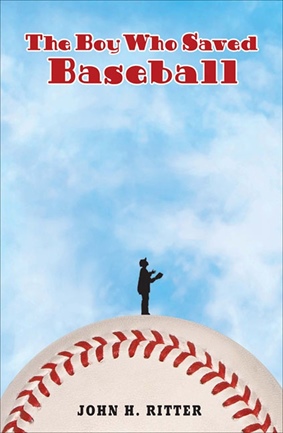About the Author
Novelist John H. Ritter (born October 31, 1951, in San Pedro, California) grew up in the summer-dry hills east of San Diego. "I grew up in a baseball family," says John. "But we were also a family of musicians and mathematicians, house painters and poets. My dad was a sports writer in Ashtabula, Ohio, who moved the family out west, just before I was born, to become Sports Editor for The San Diego Union."Growing up in a sparse, mountainous region also helped stretch John's imagination. "Out in that country," he says, "there was a real sense of the spirits who walked the land in the centuries before. And being so cut off from other kids, I roamed the hills a lot, following hawks and eagles, climbing boulders, sitting in Indian caves. Rattlesnakes never bothered us much. But I felt the spirits everywhere. I think my mom, who was part Blackfoot Indian, had a lot to do with that."When John was only four, however, his mother died of breast cancer, leaving his father to raise four small children on his own. John still recalls his mother and her songs. "One thing I remember about my mom is that she sang to us constantly, making up a song for each of her four children that fit our personalities perfectly. So from her, I got a sense of how to capture aperson's spirit in a lyrical phrase."Over time, his musical interests continued to grow and in high school, the social commentary of folksinger Bob Dylan inspired him to write his own songs, hoping to pursue a musical career. He was, however, a “wild student,” he admits to English professor Chris Crowe in an interview forThe ALAN Review, and was torn between his love of baseball and writing, calling himself both “a high achiever and a rabble rouser,” noting, for example, that in 1969 he was voted Senior Class President and the Senior Class Clown. Teachers did, however, recognize his writing talent, although his work was so often read out loud in class that he also admits to growing complacent and somewhat lazy about having to improve his skills.At the University of California, San Diego, John studied communications while playing for the UCSD baseball team, all-the-while continuing to write Dylan-style songs. But by his sophomore year, he recalls, “I was anxious to get on with my life. And for the vision I had in mind, college didn’t have much to offer me. I knew I had to walk the streets, touch life, embrace life, gain experience.” So like his literary heroes before him, i.e., Dylan, Jack Kerouac, and Mark Twain, John quit school, taking a job as a painter’s apprentice, and set about traveling the country. He learned to live so cheaply that he could earn enough in three or four months to allow him to travel and write for the rest of the year. He did that for several years, until he married his wife, Cheryl, whom he had met in college, and they had a baby daughter. With a family to support, John needed to work nine months a year, painting houses, but the rest of his time went into writing, an artistic lifestyle he later spotlighted in his song-laden socio-political novel,Under the Baseball Moon.In 1994, after publishing several short stories, John received the Judy Blume Award and a cash grant from the Society of Children’s Book Writers and Illustrators (SCBWI) for a novel in progress. In 1996, he submitted his manuscript through the Curtis Brown Agency to Philomel Books where it became the first acquisition of junior editor, Michael Green. Since then, Green has risen to become Editorial Director and Publisher of Philomel Books and has edited all six of John’s novels.In 1999, John’s first novel,Choosing Up Sides, won the International Reading Association Children’s Book Award for Older Readers and was designated an American Library Association Best Book for Young Adults. This hard-hitting work of ... [To see more of this bio, go to John's website or his Wikipedia entry.]
